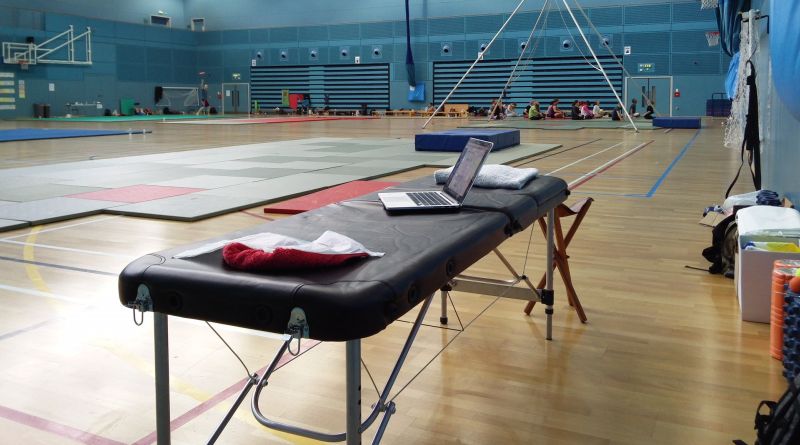When is the Best Time to See a Physical Therapist? [Hint: It’s Not When You Think!]

When the UK Deputy Prime Minister launched the Mental Health Charter for Sport and Recreation in March 2015, it was a great leap forward in more ways than most realised. Designed to remove the stigma of mental health care in sport and to promote physical activity as an alternative treatment, it also served to bolster an important trend—one that matters to circus performers as much as it has to do with mental health in larger society–preventative care.
That trend? It’s the ‘wellness’ approach to health care. The charter sought to promote regular exercise as the pathway to several important health benefits, not limited to reduced risk of dementia, decreased anxiety, treating depression, and reduced risk of several long-term illnesses.
In short, Deputy Prime Minister Nick Clegg was promoting the idea of being proactive about health.
Do You Take a Reactive or a Proactive Approach to Health?

As a professional circus performer, you probably have a strong sense of the connection between preventive care and your physical health. You eat right, you take care of your body, and get plenty of rest. But did you know that seeing a physical therapist can also be part of your preventive health care regimen?
In fact, hands down, the best time to see a physical therapist is before your season or training cycle begins… for a screening.
Most performers and athletes reserve therapist visits for when have been injured. That’s unfortunate, since this represents a very outdated approach! Given what we now know about the physical demands of the body in various aerial, acrobatic, and juggling disciplines, it’s a waste of resources not to apply this specialised knowledge to help performers prevent injuries, not just to treat them.
Here’s how that works…
4 Reasons Why Screenings Can be so Useful
- A screening provides a snapshot of each circus practitioner’s current health status. It helps set an individualized benchmark for health, taking into account any ongoing health issues or injuries they may have.
- A screening can flag any potential issues that may impact on the performer’s ability to carry out their designated role/discipline(s).
- A screening can be used to create a three-point priority system to be included in any injury prevention and performance-improving program, i.e. to identify the 3 top areas that need attending to (flexibility, drilling a movement pattern, mental preparation, etc…).
- Screenings can become part of an overall educational process for the circus performer. In our experience at Perform Health, performers who learn how to analyse their health, habits, and behaviour will experience reduced risk of injury, improved performance and training longevity. It’s all about self-care!
Don’t Forget Those Other Times When You Should See a Therapist
So yes, physiotherapy can be part of an overall approach to preventive care and well being. But don’t forget there a few other times when it’s good to book an appointment with your therapist:
You’ve got a grumble. Call it a twinge, a sensation, a grumble… something isn’t right with your shoulder, your hip, your spine, or whatever. Your body is urging you to do something before that tiny whisper of a sensation develops into a full-blown shout of injury and pain.
You’re injured. Googling your own diagnosis is a sure-fire pathway to confusion and misdiagnosis. Steer clear of the internet and get an accurate diagnosis with a therapist. A physiotherapist’s job is to gauge the SIN factor: the Severity, Irritability, and Nature of your problem. Only once you and your health care practitioner have a clear idea of what you’ve done to yourself and what your injury might be can you plan how to recover.
You’ve had surgery. Surgery requires rehab, and without it, you’re only completing 50% of your treatment. Just getting an injection or having the surgery alone will not fix your injury. You’ll also need a clearly laid out rehabilitation protocol that gets you back to full fitness and in optimum shape to tackle your circus disciplines again. Your physical therapist can help you identify what led to your injury in the first place, whether it’s a poor movement pattern, overworking one side of your body, or unsafe practices.
Hopefully we’ve laid out the basis for your understanding that physical therapy is for preventive care, too.
The evolution of healthcare from a reactive mechanism into an increasingly proactive approach is among the most important transformations of the modern medical world. And right there along with this transformation, trailing on the heels of the wellness movement, has been a parallel shift in the world of physical therapies from reactive to proactive. Just as it has become common to have check ups in healthcare by visiting to the dentist, having cardio check ups or eye exams before you have a problem — the same is thankfully beginning to happen in physical therapy world.
Editor's Note: At StageLync, an international platform for the performing arts, we celebrate the diversity of our writers' backgrounds. We recognize and support their choice to use either American or British English in their articles, respecting their individual preferences and origins. This policy allows us to embrace a wide range of linguistic expressions, enriching our content and reflecting the global nature of our community.
🎧 Join us on the StageLync Podcast for inspiring stories from the world of performing arts! Tune in to hear from the creative minds who bring magic to life, both onstage and behind the scenes. 🎙️ 👉 Listen now!
